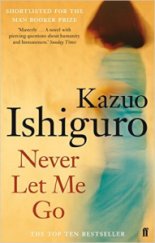Stars and Strangers @ BYOB Party in October 2019 (Part 4)
 Everyone’s favorite sci-fi author Arthur C. Clark’s book The City & the Stars was discussed. The city Diaspar was destroyed by invaders and it became the last refuge for human beings. A man called Alvin is the first human in the city and he has no memories whatsoever. All he has is curiosity, not the fear of newness that his compatriots have.
Everyone’s favorite sci-fi author Arthur C. Clark’s book The City & the Stars was discussed. The city Diaspar was destroyed by invaders and it became the last refuge for human beings. A man called Alvin is the first human in the city and he has no memories whatsoever. All he has is curiosity, not the fear of newness that his compatriots have.
Watch Arthur C. Clark talk about A Space Odyssey here.
 Bindu spoke about Malcolm Gladwell’s Talking to Strangers by Malcolm Gladwell. The anecdotes are painstakingly researched and have the usual Gladwellian flair. As I found out on Amazon.in, the book talks about all kinds of questions: How did Fidel Castro fool the CIA for a generation? Why did Neville Chamberlain think he could trust Adolf Hitler? Why are campus sexual assaults on the rise? Do television sitcoms teach us something about the way we relate to each other that isn’t true?
Bindu spoke about Malcolm Gladwell’s Talking to Strangers by Malcolm Gladwell. The anecdotes are painstakingly researched and have the usual Gladwellian flair. As I found out on Amazon.in, the book talks about all kinds of questions: How did Fidel Castro fool the CIA for a generation? Why did Neville Chamberlain think he could trust Adolf Hitler? Why are campus sexual assaults on the rise? Do television sitcoms teach us something about the way we relate to each other that isn’t true?
“But though the anecdotes were fantastic, the conclusions he draws from these were not relevant to me at least.,” Bindu opined. “There was great storytelling value but I didn’t really learn anything that I didn’t know already. I mean there is no second-guessing what strangers think; I can’t even tell you what my family members think!” You can read a similar opinion about the book here.
“Of late, I’ve started to listen to more quality online lectures. A much better investment of time.”
The entire discussion shifted to the 10,000 Hour Rule mistakenly attributed to Malcolm Gladwell. Gladwell used Ericsson’s provocative generalization and somehow the idea of 10,000 hours became the touchstone of learning. Listen to this Ted Talk that disputes this idea- you need just 20 hours of deliberate practice to get started on something. You could also take this idea of ‘less is more’ to another extreme- take the expert capsule courses that last for 20 minutes a day and give you certification. That’s dangerous too, especially if it’s certification for something like machine gun expertise!
Some more 10,000-hour trivia— the Japanese character for 10,000 looks like a walking man and 10,000 step goals in Japan.
More books in Part 5.


 Joshua expounded on a memoir called
Joshua expounded on a memoir called Shweta enjoyed reading Judy Finnigan’s
Shweta enjoyed reading Judy Finnigan’s  Stephen is a big fan of cyberpunk and sci-fi. He spoke about
Stephen is a big fan of cyberpunk and sci-fi. He spoke about  Ratnakar brought in an element of science fiction into the BYOB Party with the book
Ratnakar brought in an element of science fiction into the BYOB Party with the book  Satish got a fantasy read. He’s a big fan of China Miéville and loves his YA books the most. Not many people in the room had heard of China Miéville, a sensational science fiction writer who has won two Arthur C Clarke awards and several other prizes as well.
Satish got a fantasy read. He’s a big fan of China Miéville and loves his YA books the most. Not many people in the room had heard of China Miéville, a sensational science fiction writer who has won two Arthur C Clarke awards and several other prizes as well.  Adi read the famous satirical novel
Adi read the famous satirical novel  Dinesh got a sci-fi book by Orson Scott Card called
Dinesh got a sci-fi book by Orson Scott Card called  Sudharsan read the book
Sudharsan read the book  Chaitanya brought along the bestseller
Chaitanya brought along the bestseller  Akshay is an avid sci-fi reader. When he was done with his share of Clarks and Asimovs, he came across Hamilton. The book he talked about was
Akshay is an avid sci-fi reader. When he was done with his share of Clarks and Asimovs, he came across Hamilton. The book he talked about was  Piya Bose has read her share of sci-fi as well. What she’s now looking for is a sci-fi heavier on emotional quotient. She found this in
Piya Bose has read her share of sci-fi as well. What she’s now looking for is a sci-fi heavier on emotional quotient. She found this in 
